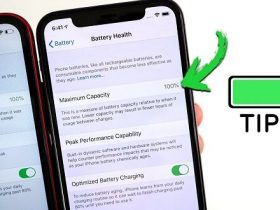The Apple A15 Bionic is a 64-bit ARM-based system-on-chip (SoC) that powers the iPhone 13 Mini, iPhone 13, iPhone 13 Pro and iPhone 13 Pro Max, iPad Mini, and iPhone SE2. Read on to learn more about this chip.
Analysis of Apple A15 Bionic
The Apple A15 Bionic is a new processor from the company that is widely expected to improve iPhone performance. It shares many similarities with its predecessor, the A14 Bionic, and the two chipsets have the same number of cores. In addition, both processors use the same 5nm manufacturing process, which results in a minor performance increase.
The A15 Bionic processor is equipped with a 16-core neural engine, which can perform up to 15.8 trillion operations per second. This is a considerable improvement over the A14 Bionic’s 11 trillion operations per second. The improved Nerual Engine also enables faster live text captions and advanced text-to-speech. Other improvements include a new display engine, video encoder and decoder, and major improvements in Image Signal Processing.
Comparison to previous chipsets
The A15 Bionic chip is a significant upgrade for Apple’s smartphone processors. The chip features a 16-core “neural engine” that speeds up artificial intelligence tasks by using machine learning technology. This helps increase the breadth and depth of tasks that the chip is capable of, from generating synthetic voice to recognizing objects in photos. It also boosts the speed of facial recognition and unlocking the phone with Face ID.
The new A15 Bionic chipset is significantly faster than the A14 Bionic chip, according to independent benchmarks. The A15 bionic processor is also 62% faster than its closest rivals. Apple says that its new chip has a 20% CPU performance boost over the A14, but independent benchmarks conducted by Anandtech show that the A15 is up to 62% faster than its predecessor.
Performance of Apple A15 Bionic
The Apple A15 Bionic is a new flagship smartphone from Apple, sporting a 16-core neural engine that performs 15.8 trillion operations per second. This is a major upgrade over the A14 Bionic’s 11 trillion operations per second. Among other improvements, the new chip offers better text-to-speech capabilities and faster live text captions. It also has a new display engine, video encoder, and decoder, and major improvements in Image Signal Processing.
The new A15 Bionic processor is likely to go into iPhone 13s and 13 Pros, and it will likely power the next-generation iPads and Macs. Unlike the A14, the new chip will allow Apple to set its own priorities and better integrate its own software.
Neural Engine
The Apple A15 chip has a 16-core “neural engine” that boosts the performance of artificial intelligence tasks. The neural engine uses machine learning technology to perform these tasks in a faster, more efficient manner. It is useful for a wide range of tasks, including creating a synthetic voice similar to Siri’s, recognizing information in photos, and unlocking the phone with Face ID. This chip is a significant improvement over the A14, which had only a single core.
The Apple A15 Bionic processor uses a new architecture with two high-performance and four high-efficiency processing cores. This new architecture supports the Neural Engine, which is capable of handling 15.8 trillion operations per second. The chip also has a two-times-larger system cache, an improved image signal processor, and a new display engine. It is also paired with a 16-core Neural Engine to increase the performance of machine-learning tasks.
System cache
Apple’s new A15 Bionic processor has a much bigger system cache than its predecessor. The level 2 cache has increased by 50%, to 12 MB. This makes the new processor twice as fast as the A14 Bionic. Apple also improved the memory subsystem, making it faster.
The new A15 chip also has a more powerful GPU, with a higher peak single-core frequency. In addition, Apple has added a secure enclave, a new image signal processor, and an improved display engine. The new chip is also capable of running a 28% brighter display than its predecessor.
The A15 Bionic’s system cache is more than twice the size of the A14’s, which made the new chip much faster. The company says the A15 has a higher system cache than the A14, which is an important factor in determining a processor’s power efficiency. Apple claims that the A15’s system cache improved energy efficiency by 17 percent compared to the Snapdragon 888.









Leave a Reply